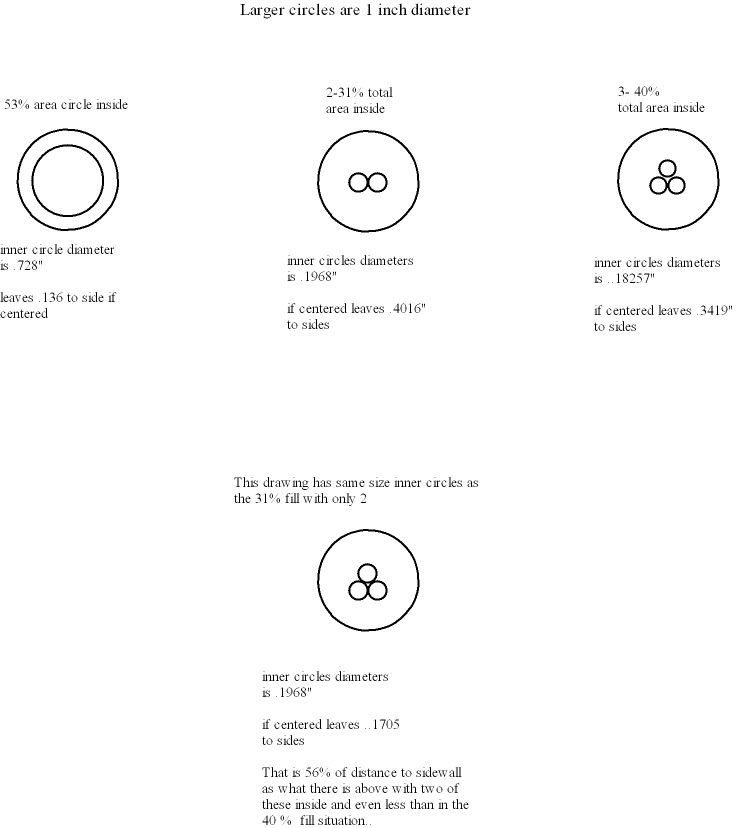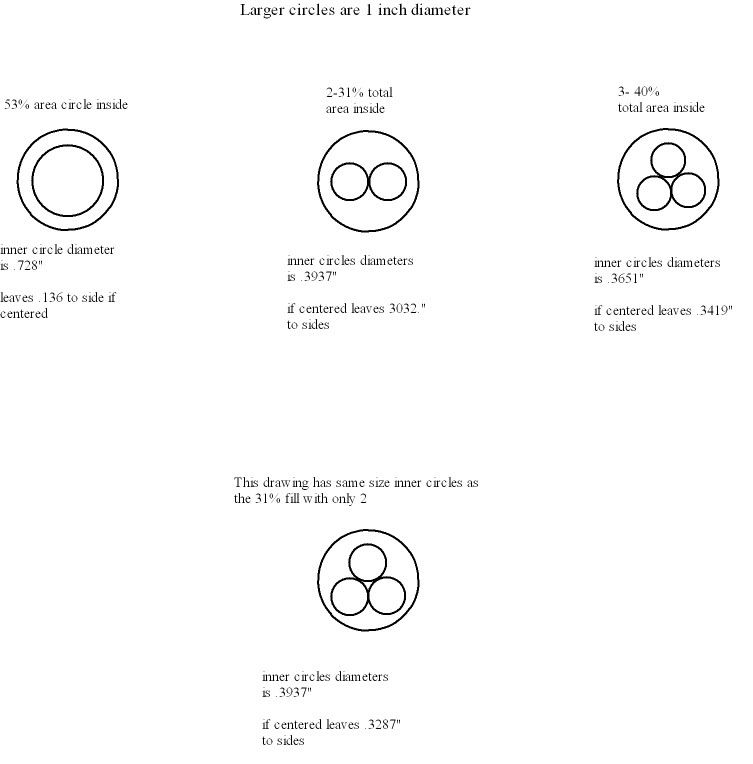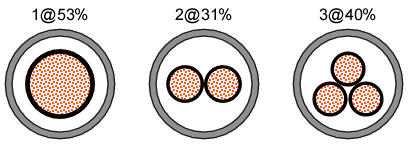kwired
Electron manager
- Location
- NE Nebraska
was radius on that one think others are correct. Corrected version:Your fill is off. Look at the one small circle in large circle. You can fit about six more smaller circles around the existing one. The one circle is far from 53% of the larger. At 53%, the smaller circle should have a diameter 73% of the larger. What you have for diameter is more likely the radius.




